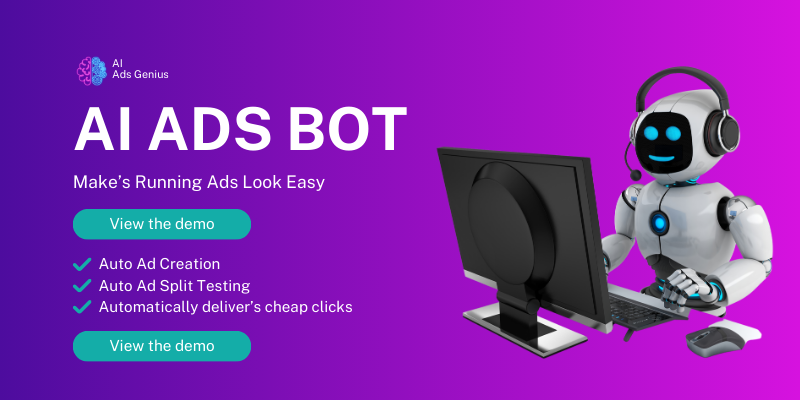Understanding Google Ads Fundamentals
What is Google Ads?
Alright, let’s start with the basics. Google Ads, formerly known as Google AdWords, is a powerful online advertising platform that allows you to reach your target audience through meticulously designed ads. Think of it as your digital billboard where you can promote your products or services right when potential customers are looking for them.
What makes Google Ads stand out is its pay-per-click (PPC) model; you only pay when someone clicks on your ad. This means you’re investing in tangible results! But to really harness its power, it’s essential to understand how the auction system works and the different ad formats available, from search ads to display and video ads.
The beauty of Google Ads is that it allows you to set your budget, ensuring that you don’t have to break the bank. You can start small, see what works, and scale up as you learn. So, if you’re considering diving into the world of online advertising, Google Ads is where it’s at!
Setting a Clear Goal
Why Goals Matter
Before diving headfirst into Google Ads, it’s crucial to set clear objectives. Having a goal gives your campaigns direction. Are you looking to drive traffic to your website, boost sales, increase brand awareness, or perhaps generate leads? Knowing your purpose will shape your ad strategy.
Each goal will require a different approach. For instance, if your aim is to increase sales, you might focus on targeting specific keywords that are likely to bring in buyers. Alternatively, for brand awareness, you might choose a wider audience and utilize display ads to capture attention.
Remember, your goals can evolve. Just because you start with one doesn’t mean you can’t tweak it along the way as you gather data and insights from your campaigns!
Keyword Research & Selection
Finding the Right Keywords
Now, let’s dive into one of the most critical aspects of Google Ads: keyword research. As someone who has spent plenty of late nights researching keywords, I can tell you that this step often determines the success of your campaigns. Start by brainstorming a list of terms related to your business that you think customers might use when searching online.
But don’t stop there! Utilize tools like Google’s Keyword Planner to uncover search volume and competition levels. It’s like having a cheat sheet that shows you the best opportunities to target! You’ll want to aim for a mix of general keywords and more specific long-tail keywords to cover various stages of the buyer’s journey.
Once you have your list, refine it! Regularly review your keyword performance to ensure you’re investing in the right terms and consider adding negative keywords to filter out irrelevant traffic. This is about working smart, not just hard!
Crafting Compelling Ads
The Art of Ad Copy
With your keywords in hand, it’s time to create your ads. This is where your creativity can shine! Each ad needs to capture attention and drive action. Start with strong headlines that incorporate your keywords and speak directly to your target audience’s needs.
Don’t forget the importance of a solid call-to-action (CTA). Whether it’s “Shop Now,” “Learn More,” or “Get a Free Quote,” a clear CTA can make the difference between a click and a scroll past your ad. And hey, a little experimentation never hurts—try different versions of your ad copy to see what resonates best with your audience.
And remember, visuals matter! If you’re creating display ads, invest time in making visually engaging designs that align with your brand. People are drawn to colors and images, so make your ads stand out while staying true to your brand identity!
Monitoring & Optimization
Data is Your Best Friend
Once your ads are live, the real fun begins! Monitoring performance can sound daunting, but trust me, it becomes second nature. Regularly check metrics like click-through rates (CTR), conversion rates, and return on ad spend (ROAS). These numbers tell you what’s working and what might need a little love.
Optimization is an ongoing process. Use A/B testing to experiment with different ads and strategies. Maybe your headlines need tweaking, or your landing pages could use a refresh. Be proactive about making adjustments based on data insights—it’s all part of the game!
Lastly, don’t be afraid to dive deep into the analytics. Tools like Google Analytics can provide additional clarity on user behavior post-click. Knowledge is power, so the more you know, the better your campaigns will perform!
Frequently Asked Questions
1. What budget should I set for Google Ads?
Your budget really depends on your goals and how much you’re willing to invest in testing. I recommend starting with a modest daily budget and adjusting as you find what works for your campaigns.
2. How long does it take to see results from Google Ads?
Results can vary, but many advertisers start to see movement within a few days or weeks. It all depends on factors like competition, budget, and how well your ads are set up. Be patient and keep optimizing!
3. Can I run Google Ads without a website?
It’s definitely tricky. While you can set up a campaign linking to a social media profile or a Google My Business listing, having a dedicated landing page often provides a better experience and conversion rates.
4. What is a quality score in Google Ads?
Quality Score is Google’s way of measuring the relevance and quality of your ads, keywords, and landing pages. A higher quality score usually means lower costs and better ad positions, so aim to keep this score as high as possible!
5. Is Google Ads suitable for small businesses?
Absolutely! Google Ads can be incredibly effective for small businesses looking to reach specific audiences. Just remember, it’s all about strategy— focusing on the right keywords and ads can lead to great returns on your investment.

